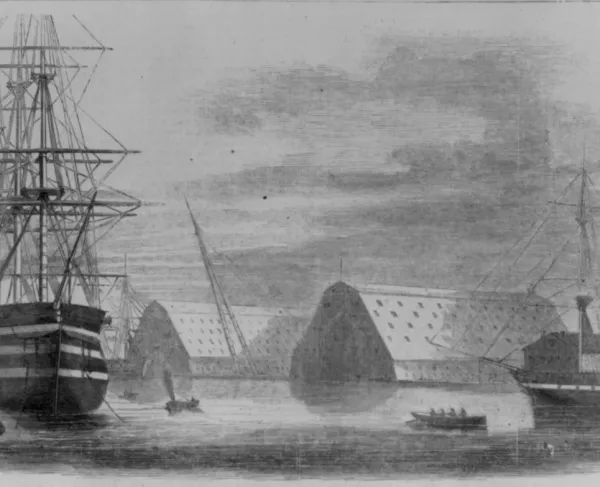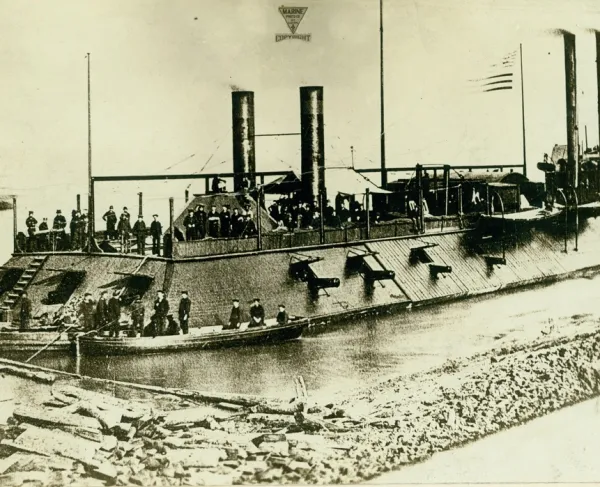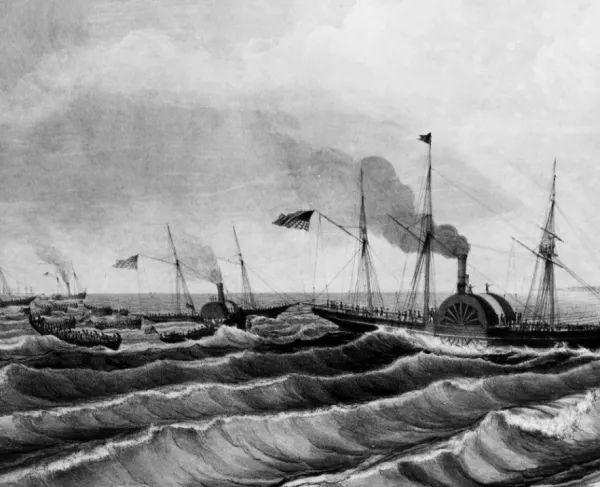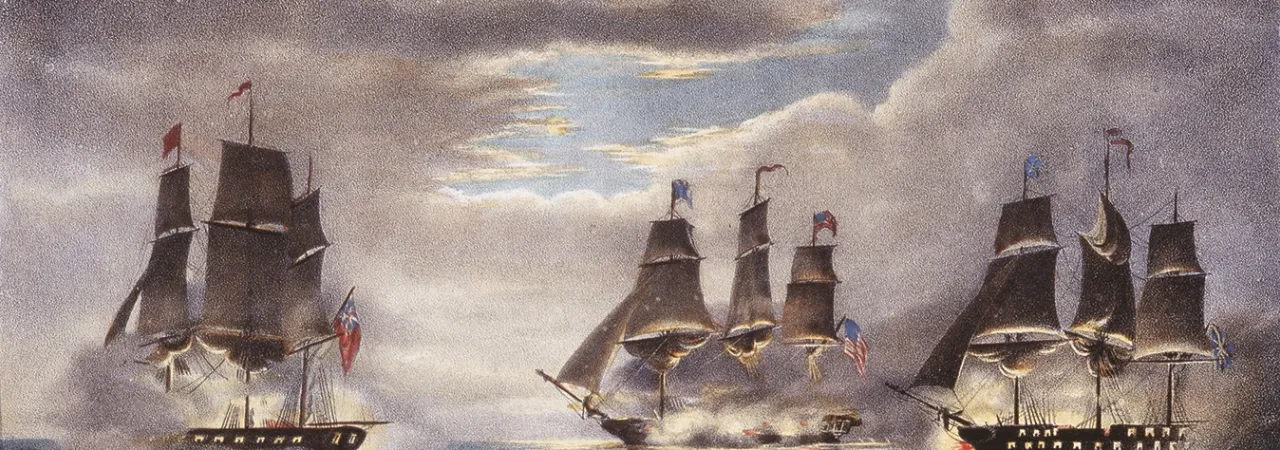
“Old Ironsides” is a strong and powerful nickname for the oldest still active floating ship in the United States Navy. Officially the vessel is the United States Ship “USS” Constitution, one of the first five frigates built by the United States after independence. In 1794, after the passage of the Naval Act of the same year, President George Washington chose the first five names given to him by the war office as possible names for the ships. The new names were United States, President, Congress, Constitution, and Constellation. Later a sixth, the USS Chesapeake, was constructed in a naval yard in Norfolk, Virginia.
Three years later, the USS Constitution was launched from the Edmund Hartt’s Shipyard in north Boston, Massachusetts. Joshua Humphreys designed the model for the frigates with the intention of making them capital ships for the burgeoning United States Navy, with a larger and heavily armed design . The USS Constitution first saw service in the Quasi-War with France and then action in the Barbary Wars that ushered in the 19th century.
A larger conflict, the War of 1812, tested the mettle and resolve of the frigate. On August 16, 1812, commanding the USS Constitution, Captain Isaac Hull heard about the sailing of a British frigate 100 nautical (or 120 land miles) to the south of Boston and took his ship to sea. On August 19, the HMS Guerriere greeted the American ship with a salvo of cannonballs. Hull maneuvered the USS Constitution into a favorable position. Within 25 yards of the enemy ship, he ordered a broadside of double-loaded grape and round shot, shredding the British ship’s mizzenmast.
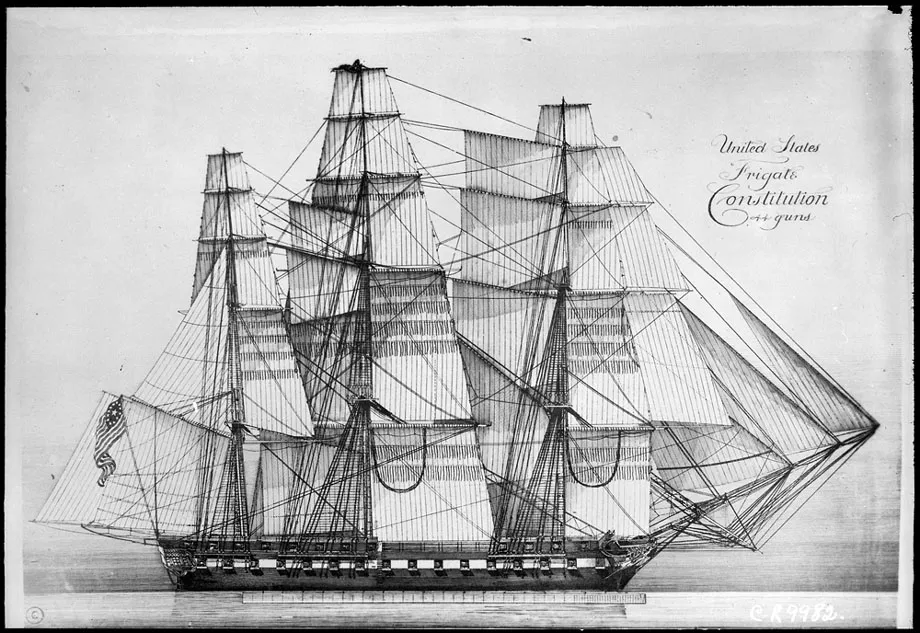
Although the two ships became entangled in rigging, the HMS Guerriere had only a few guns still available to fire. The USS Constitution continued to fire broadside. When the American ship was able to pull free, Hull and his sailors could see the damage they caused the British vessel. In dire straits with half of her crew casualties, the HMS Guerriere shortly thereafter struck her colors in surrender.
The USS Constitution followed up this victory on the high seas before the end of that year with another successful engagement, this time against the HMS Java. Under the command of Captain William Bainbridge, the ship sailed south from its North American port. After realizing the initial situation in a neutral port on the Brazilian coast was best left to another United States ship guarding the entrance, the USS Constitution sailed off in search of other enemy ships or prizes in the south Atlantic Ocean. Near the end of 1812, the American ship found the British ship HMS Java on December 29. Although the USS Constitution received a brutal broadside to begin the battle that shredded its rigging, the American ship returned the broadside with multiple ones of her own. Much like the sea battle with the HMS Guerriere, the USS Constitution closed in on her adversary. With a devastating salvo the HMS Java’s foremast crashed down two decks below. The USS Constitution suffered damages as well, specifically to her helm, and suffered casualties among personnel, including Capt. Bainbridge. However, the Americans were able to pull away from the enemy. After quickly making emergency repairs the USS Constitution returned within the hour to continue the naval engagement. The British ship was in no shape to continue the fight and struck her colors. The USS Constitution returned to Boston on February 15, 1813, to another warm reception by the American populace.
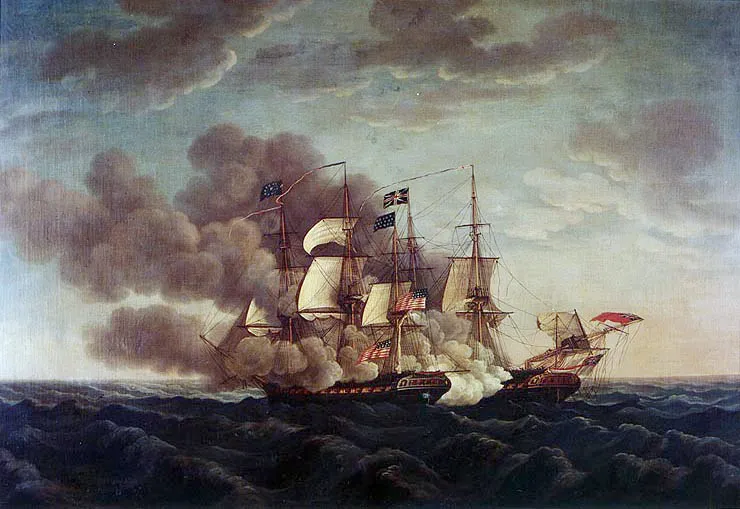
The USS Constitution went on to capture two other British ships. Yet, the USS Constitution had compiled a stellar record for the United States Navy throughout the War of 1812. Her service to the country continues to this day.
Throughout the next century and a half, the USS Constitution served in the Mediterranean Sea, joined the Pacific Ocean squadron as the flagship, sailed around the world, and even saw service during the American Civil War; both as part of the blockading squadron and a training ship. She was then shown off at the Paris Exposition of 1878 and transitioned to a museum ship. She is still docked in Charlestown Navy Yard and continues to promote the history of the United States Navy. Continuing the ship's tradition of being a trailblazer itself, on January 17, 2022 the first female officer became captain of “Old Ironsides," the nickname for the ship earned on the high seas throughout multiple centuries of stellar service in America’s naval history.

